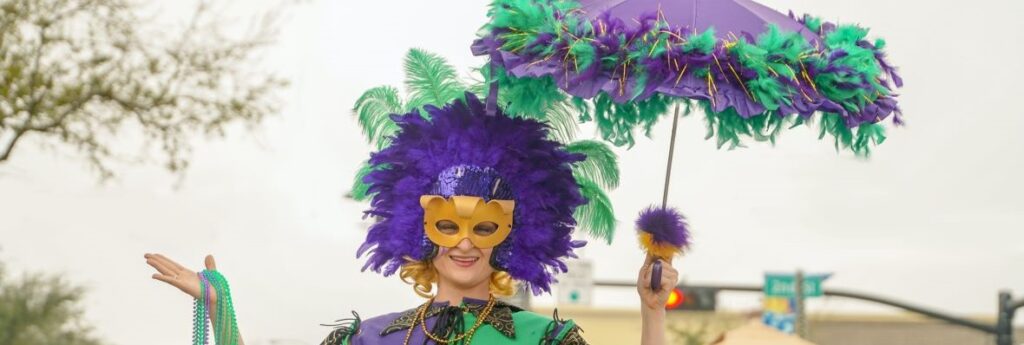The countdown to Mardi Gras began Saturday in New Orleans as Carnival season kicked off with dozens of costumed revellers and a brass band crowding onto a streetcar for a nighttime ride down historic St. Charles Avenue. Meanwhile, a walking club in the French Quarter marched in its annual procession honoring Joan of Arc.
What’s it all about?
While it’s a secular celebration, Carnival in New Orleans – and around the world – is strongly linked to Christian and Roman Catholic traditions. The season began on Jan. 6, the 12th day after Christmas, and continues until Mardi Gras, known as Fat Tuesday, which is the final day of feasting, drinking and revelry before Ash Wednesday and the fasting associated with Lent.
New Orleans has the largest and best-known Carnival celebrations in the US, with street parties, fancy balls and parades from simple neighbourhood-based walking clubs to elaborate high-tech extravaganzas with massive floats laden with flashing lights and giant animated figures.
Other Louisiana and Gulf Coast communities also celebrate. Mobile, Alabama, lays claim to the nation’s oldest Mardi Gras observances.
The party begins
Saturday’s events included the annual streetcar ride by the Phunny Phorty Phellows, a group of masked and costumed men and women aboard a New Orleans streetcar that rumbles out of the cavernous public transit barn in the Carrollton neighbourhood before rolling onto St. Charles Avenue.
Like much of New Orleans Carnival, it’s a tradition that has evolved. The current Phellows first assembled in 1981, a rebirth of a satirical Carnival krewe that took to the streets in 1878 and ceased parading in 1898, according to history provided by the group.
In the French Quarter, the yearly parade by the Krewe de Jeanne d’ Arc marking the birthday of the French hero marches on a route that carries them past a golden statue of their namesake. This year’s guests include a delegation from Orléans, France.
While the parade is cast as a tribute to Joan of Arc, participants end the parade with a ceremony marking the end of the Christmas season and the arrival of Carnival, krewe captain Antoinette Alteriis said.
Tourism boost
Locals embrace the traditions of Mardi Gras but the event also is a much-welcome generator of commerce in a city famous for its bars, restaurants, and a tourism-dependent economy. That economy took a big hit when parades and other festivities were largely shut down in 2021 due to the COVID-19 pandemic.
Mark Romig of tourism agency New Orleans & Co. said there has been a strong rebound.
“It’s been a very dramatic return,” Romig said. “We saw it steadily increase beginning in ‘22. This past year, ’23, was amazing, we felt very good about it.”
Abbreviated season
Romig said he is optimistic Carnival tourism numbers will be even better this year, even though the season is relatively brief.
New Orleans always starts celebrating on Jan. 6 but the end-date each season varies, depending on the variable dates of Easter and Lent. This year, it’s a relatively short season, culminating on Feb. 13.
Saturday’s parades in New Orleans are a prelude to other small parades set for January and the series of larger, major parades that roll over a 12-day period beginning this year on Feb. 2.

